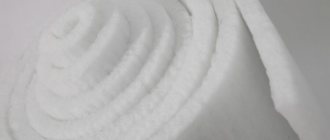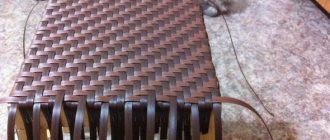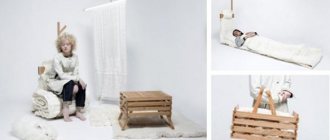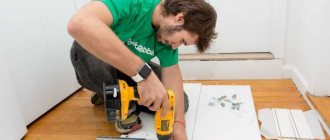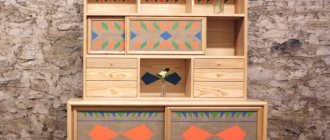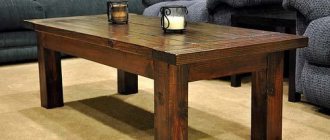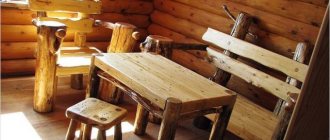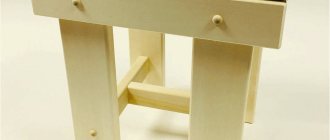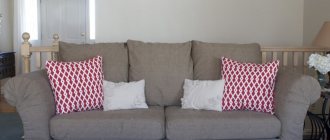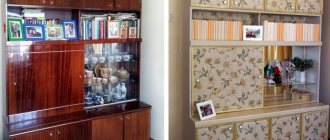An interior that includes wicker furniture immediately automatically becomes original and sophisticated. It cannot be called ordinary, it cannot be ignored. Wicker items give the room a colonial look, making it solid and somewhat “foreign”. At the same time, not everyone can afford to buy ready-made wicker chairs and sofas - their prices are very high.
They are partly due to the high share of manual labor in the production process. At the same time, almost any user can independently make such products - the technologies are quite simple, and one of the possible materials grows in abundance along the banks of rivers and lakes. You just need to understand the technology and understand the sequence of actions. Let's consider this issue more carefully.
Wood weaving is a rare skill
The production of wicker furniture from willow and other materials is a traditional Russian craft. In this way, not only furniture was created, for example, rocking chairs and cradles, but also other useful household items - baskets, various household utensils and even fences. Weaving was a very common skill.
But during the 20th century there were so many changes affecting the entire population that many traditional skills seem to be a thing of the past forever. The ability to weave wood is now considered something rare and even exclusive. A master who has mastered this craft will not only be able to create his own unique interior, but, with a little effort, will receive a flood of orders.
The production of wicker furniture from willow and other materials is a traditional Russian craft.
Wicker furniture is a new hit in interior design
Currently, weaving furniture from wicker with your own hands is attracting more and more people. Wicker furniture has a whole range of advantages over its “mass” counterparts. It is made only from environmentally friendly materials, without glue and other not very useful chemicals. Such furniture weighs significantly less than traditional furniture and is easy to transport, transport or rearrange inside the house.
The appearance of such products will always be unique, original, and special. High-quality weaving ensures a long service life of such furniture while maintaining all external characteristics.
The furniture does not require complex care , such as polishing: it is enough to remove dust from it with a dry cloth and treat it with anti-moisture agents twice a year. The cost of wicker interior items is also low. This entire list of positive qualities explains the popularity of wicker furniture.
As for the disadvantages, these include low temperature resistance: humidity or heat are equally harmful to products, the damage from them is very difficult to eliminate. Therefore, if you plan to use wicker furniture in your own garden, it is better to provide a “shelter” for it - a place where the furniture can be easily hidden in case of bad weather.
Decoration
To decorate such furniture, different methods can be used:
- coating with various protective varnishes or paints;
- creating a soft place with optimal upholstery that has an attractive appearance;
- attaching additional elements made of glass, metal or other materials.
Thus, creating wicker furniture on your own is quite simple. To achieve this, various unique ideas and desires of the owners of the territory can be realized. A small amount of money is spent on the process.
What is required for weaving - preparing willow twigs
Now let's take a closer look at how to make wicker furniture with your own hands. The quality of the finished products will depend on two factors: the characteristics of the harvested wood and the skills of the craftsman. Skills can be improved over the years, but it’s better to learn how to collect high-quality material right away.
The most common products are made from two materials: willow and rattan. Willow is considered a less strong and durable material. It can be harvested throughout the year, although twigs collected in late autumn will be stronger. Before cutting a willow rod, you need to bend it in several places or even wrap it around your finger - it should bend well, not crack or break even when bent up to 180 degrees. Trimming is done at an angle of 40 degrees.
The optimal solution would be to prepare rods of approximately equal thickness from 1.5 to 2 meters. The cut rods are grouped on site in bundles of 300-500 pieces depending on the thickness - thin, medium, thick. They will be needed to make various pieces of furniture.
Weaving is done by hand, but it requires templates and a frame.
Tools for work
Weaving from wicker is a labor-intensive task that requires scrupulousness. You just can't do it with your hands. You will have to stock up on a whole set of tools:
- special knives and garden shears for cutting and trimming twigs;
- ladder for sorting raw materials;
- large capacity, tank for soaking the rod;
- boiler for cooking and bleaching workpieces;
- squeezers for cleaning twigs from bark;
- splitters for dividing rods into parts;
- shof for obtaining planed strips;
- shmyg for figure processing, notching;
- iser for aligning rows;
- jigs for straightening frame blanks;
- pruner;
- measuring accessories - ruler or tape measure;
- pliers;
- saw on wood.
How to process cut willow twigs
In the workshop, all the bundles are untied and given the opportunity to warm up in a warm room before starting work. This is especially important for rods prepared in the cold season. Some craftsmen soak the workpieces in warm water. Before starting work, all the rods must be kept in boiling water for 1 hour and the bark removed from them.
In addition, the rods can be processed to change color. For example, if cleaned and soaked rods are held in hydrogen peroxide, they will acquire a white tint. A solution of manganese will make them brownish, vitriol will make them gray. In addition, aniline dyes will give the rods any shade you are interested in.
Is there an alternative to willow twigs?
Not everyone who wants to try their hand at making wicker furniture has the desire and ability to prepare willow twigs themselves. In this case, there is a way out - you can try to weave products from modern artificial materials.
An increasingly popular alternative to willow is rattan , which is specially treated stems and shoots of palm trees. This material is considered more durable, flexible and moisture resistant. However, such trees do not grow in Russia, so you will either have to purchase the source material or choose to produce furniture from artificial rattan.
Artificial rattan is a material based on polyurethane tape. Of course, such furniture cannot be considered natural or completely environmentally friendly. But weaving from rattan for beginners is much easier than from willow twigs , since the artificial material is more flexible and does not break. In addition, there is no need to prepare rods - you just need to purchase the necessary batch for work.
In addition, there are a lot of other materials suitable for weaving - bird cherry, raspberry, willow, alder, grapes, hazel (walnut), broom, abaca (banana leaves), bamboo, birch bark, water hyacinth and even seaweed. But all these materials are significantly inferior to willow and rattan in terms of quality characteristics, especially flexibility. In addition, some of them are not available in Russia - for example, banana leaves. For this reason, it is better to focus on more affordable willow and rattan.
Often wicker elements complement upholstered or cabinet furniture, being an element of their decor.
Types of structures
When weaving furniture from artificial rattan with your own hands, as well as from similar materials, it is better to start with the manufacture of simple products. Wicker furniture comes in two varieties:
- Frameless. These products are based on several wooden sticks fastened together, acting as ribs, which are braided with willow twigs. This option is suitable for light chairs and armchairs, tabletops, and bedside tables.
- Frame. Frame products are based on a full-fledged structure made of wooden boards or even metal slats and poles. A frame is required for complex types of furniture that must withstand heavy weight. These can be sofas, large chairs, beds, shelving.
What kind of furniture is most often woven from wooden rods or their artificial analogues? Often wicker elements complement upholstered or cabinet furniture, being an element of their decor. However, there are also completely wicker products, most often these are:
- chairs, stools and benches;
- armchairs, including rocking chairs;
- tables;
- bedside tables and shelves.
Weaving options - from simple to complex
It is better to start producing garden furniture from wood by making simple structures of the simplest type of weaving. For example, a chair or armchair. The fact is that by starting immediately with complex products with a frame, the master will definitely make mistakes, will not be able to produce an item of the required quality and will be disappointed in the entire craft.
Therefore, start by studying all the weaving options and move from simple to complex:
| Type of weaving | How to do it |
| Simple | Single rods are passed through the frame posts. |
| Rope | Each frame post is surrounded by at least two rods on each side. |
| Checkers | Each rod in a checkerboard pattern passes through 2 frame posts at once, the next one passes inside the first strip. |
| Pigtail | Decorative weaving, in which pairs of rods (possibly more) are spiraled in turn around a frame. |
| Openwork (ring, spiral, diamond-shaped, geometric) | A complex type of weaving, which should be studied after mastering all the simple ones. The rods are wrapped around the frame in the form of geometric shapes and spirals. |
In practice, these types of weaving are combined with each other: using simpler and faster options, the main part of the product is completed, and a decorative braid or other pattern decorates individual elements (handles, backs, armrests).
It is better to start producing garden furniture from wood by making simple structures of the simplest type of weaving.
Manufacturing technology
The manufacturing process of wicker furniture takes place in two main stages:
- Fabrication and assembly of the frame.
- Braiding the frame with a linear element to give it its final shape and appearance.
The traditional material for assembling the frame was thicker parts of wood (rattan palm trunks, thick willow branches, etc.). The frame was assembled by connecting its parts using nails or screws. Today, this technique is used in the same way as before, but more convenient and durable materials have appeared. For example, aluminum tubes in a plastic shell. They do not dry out, can take any shape, are durable and resistant to all external influences.
How to make a frame for wicker furniture
The simplest version of the frame is a simple structure made of wooden slats fastened together horizontally or vertically. Usually this is a frame and 4 legs. This option is suitable for making stools, chairs, poufs, and tables.
Frame models for more complex products can also be found on the Internet or developed independently. Some craftsmen buy finished products in construction or furniture stores, and then “braid” them entirely or decoratively. This option is more expensive, but also has a right to exist.
Advantages and disadvantages
- light weight, easy to move from one place to another;
- an abundance of shapes and configuration options for furniture items;
- you can make wicker furniture yourself, showing imagination and artistic taste;
- if necessary and if you have the skills, wicker furniture can be repaired or restored;
- You can make both furniture for relaxation (chairs and sofas), as well as tables, cabinets, and chests of drawers.
- if the furniture is made of natural materials, you have to monitor its condition and limit contact with moisture and sunlight;
- natural furniture must be regularly varnished;
- it is necessary to dose the load - the frame cannot withstand too much weight, and especially sudden impacts. Children should not be allowed to jump on wicker chairs or sofas;
- wicker furniture requires interiors made in a certain style;
- the price of wicker furniture is too high, which significantly limits interest in it among ordinary users.
Such shortcomings transfer wicker products to the rank of elite and specific furniture. Its production is carried out by true amateurs who find pleasure in the very process of preparing and weaving.
Do I need to treat products after weaving?
Wicker furniture will last much longer if it is treated after production. The finished product should be inspected for defects, such as uneven weaving, and corrected if possible. All roughness of the rods must be smoothed out with sandpaper.
The furniture is then painted (if necessary) or bleached with lime. In fact, wickerwork looks good even without painting . If the master believes that the color of the furniture needs to be changed, but wants to preserve its naturalness, it is worth using natural dyes, for example, a decoction of onion peels. It is a good idea to apply a varnish to your finished furniture.
Tung oil and products based on it will protect wickerwork from their main enemy - moisture. Treat finished furniture with this product, and then repeat the procedure at least twice a year. The product will retain its ideal appearance much longer.
FAQ
If artificial rattan is used, is it necessary to use aluminum tube to assemble the frame?
No, this is not necessary. The frame can be made of any materials; when working with artificial rattan, this is not important.
Is it possible to strengthen the connections of the frame and weaving tapes with glue?
In principle, it is possible. However, it is necessary to use synthetic moisture-resistant compounds that combine well with varnish coatings. Otherwise there will be no point in using glue. In addition, glue should not be the main means of joining parts, only as an additional element.
Which products are best to start with?
It is recommended to gain experience on small products - banquettes, stools, benches. Their design is close to the basic types of furniture for relaxation, but the sizes are small and allow you to better understand the technique.
How long does it take for the finished product to dry?
At least a week must pass from the completion of the braiding to the application of the first layer of varnish. Some sources claim that 2-3 days are enough, but this is too little.
What to do if the braid is weak?
It’s better to take everything apart and braid the frame again and more tightly. Trying to fix a finished weave requires skill and experience. For beginning craftsmen, the only option is to redo the work, taking into account the mistakes made.
Where to learn to weave furniture
The opportunity to find a craftsman who makes furniture with his own hands, and who is also willing to share his knowledge, is quite rare. In addition, many people who are passionate about weaving specialize in simpler products - baskets and dishes. Training courses on this craft are also extremely rare.
However, it is now possible to master the skill of weaving furniture completely independently . Firstly, on the Internet it is easy to find a variety of educational articles and videos, the authors of which explain all the basics of this matter in an accessible and step-by-step manner.
Secondly, weaving furniture is largely a creative process. Therefore, having learned the basics, most masters develop their own techniques, discover their own subtleties and constantly improvise. Do not forget that weaving furniture is not an exact science, but a craft where there is room for trial and experimentation.
